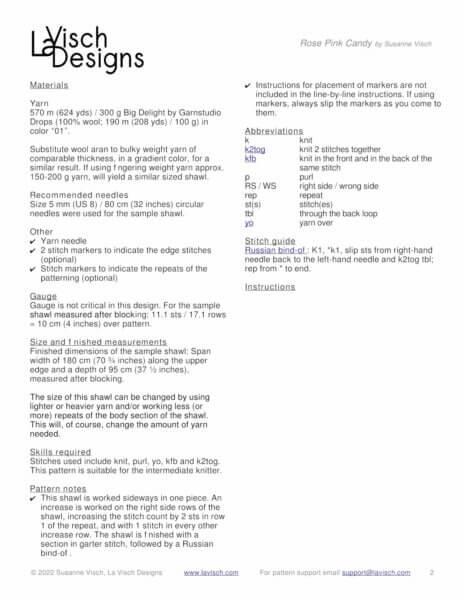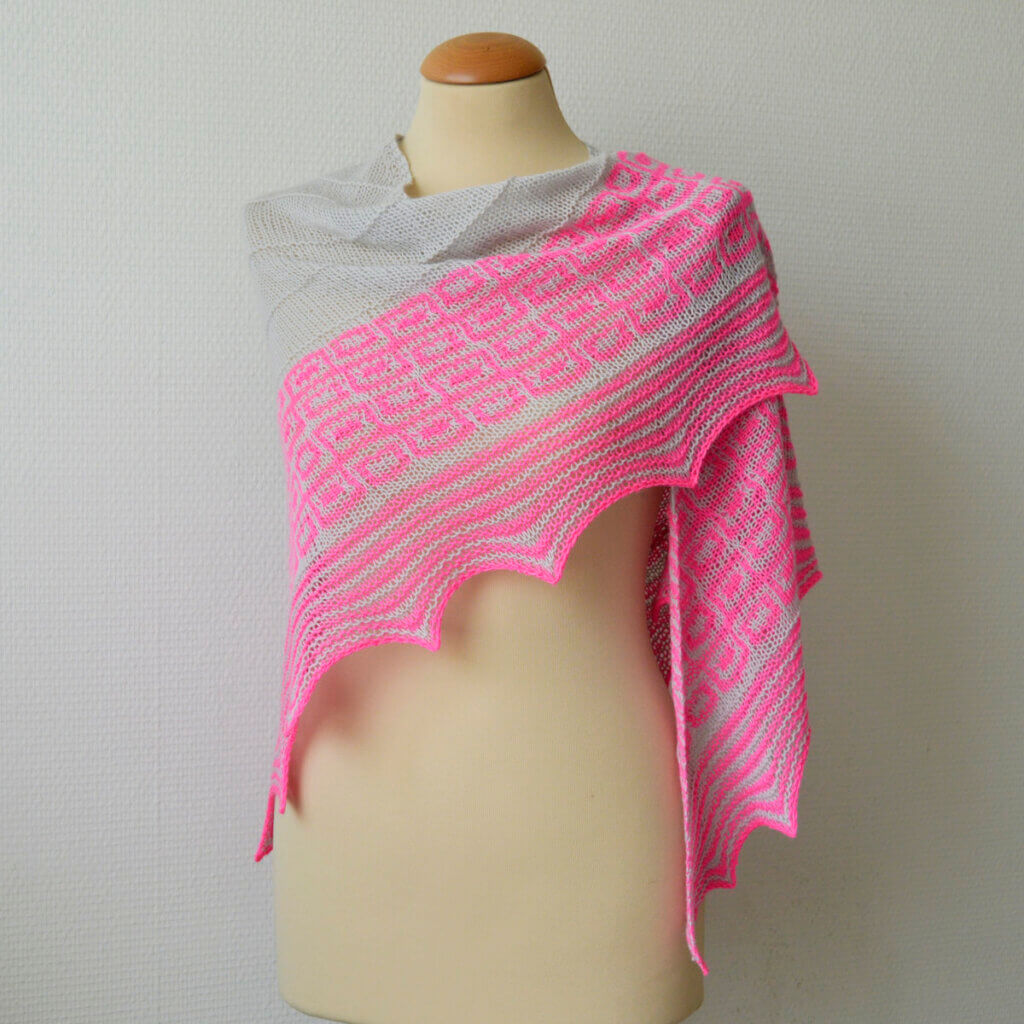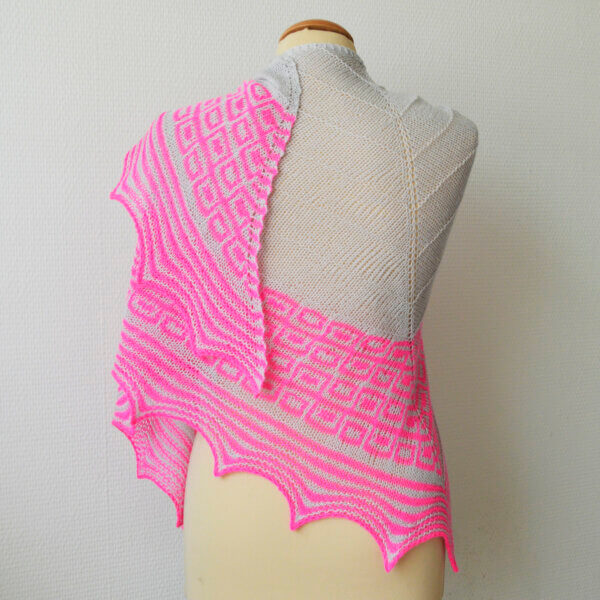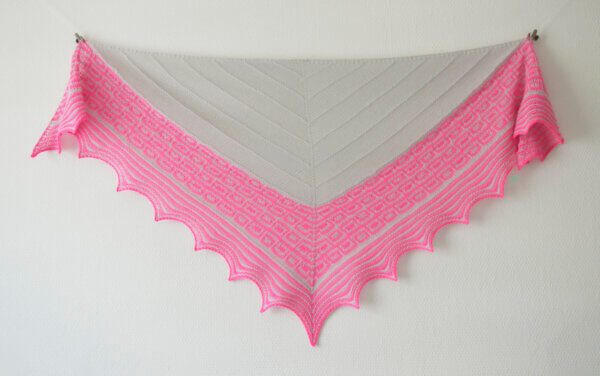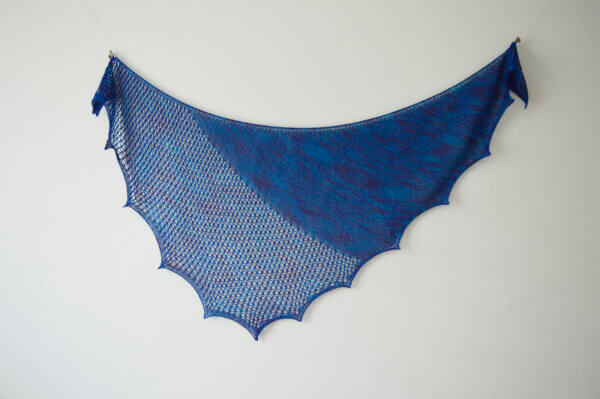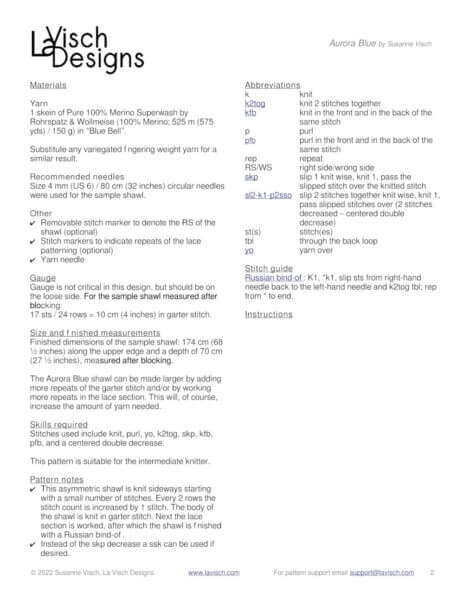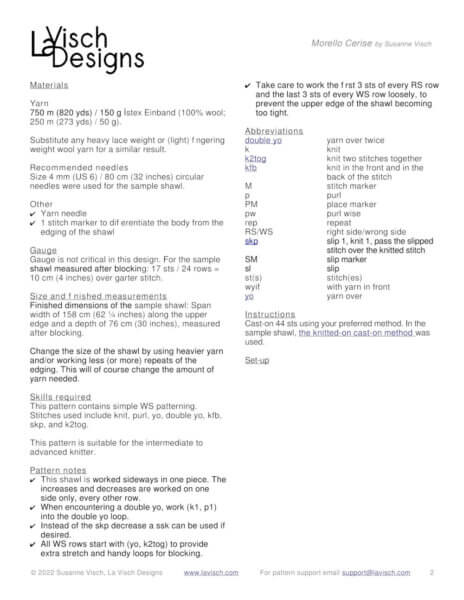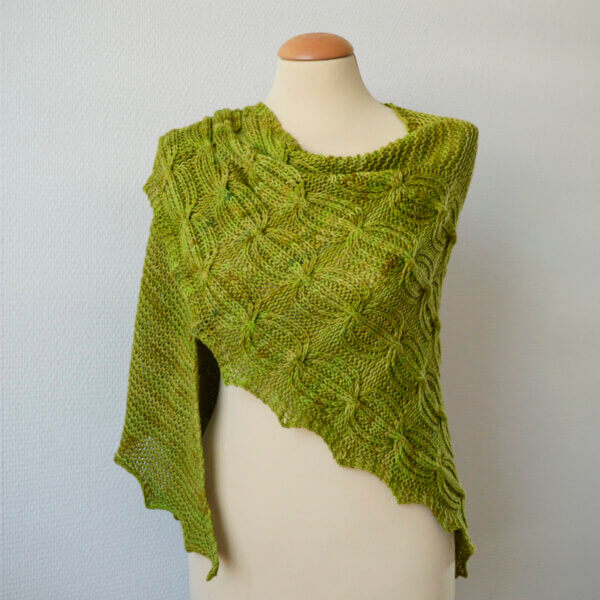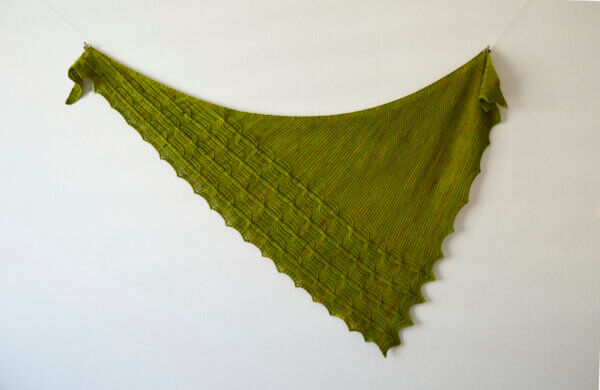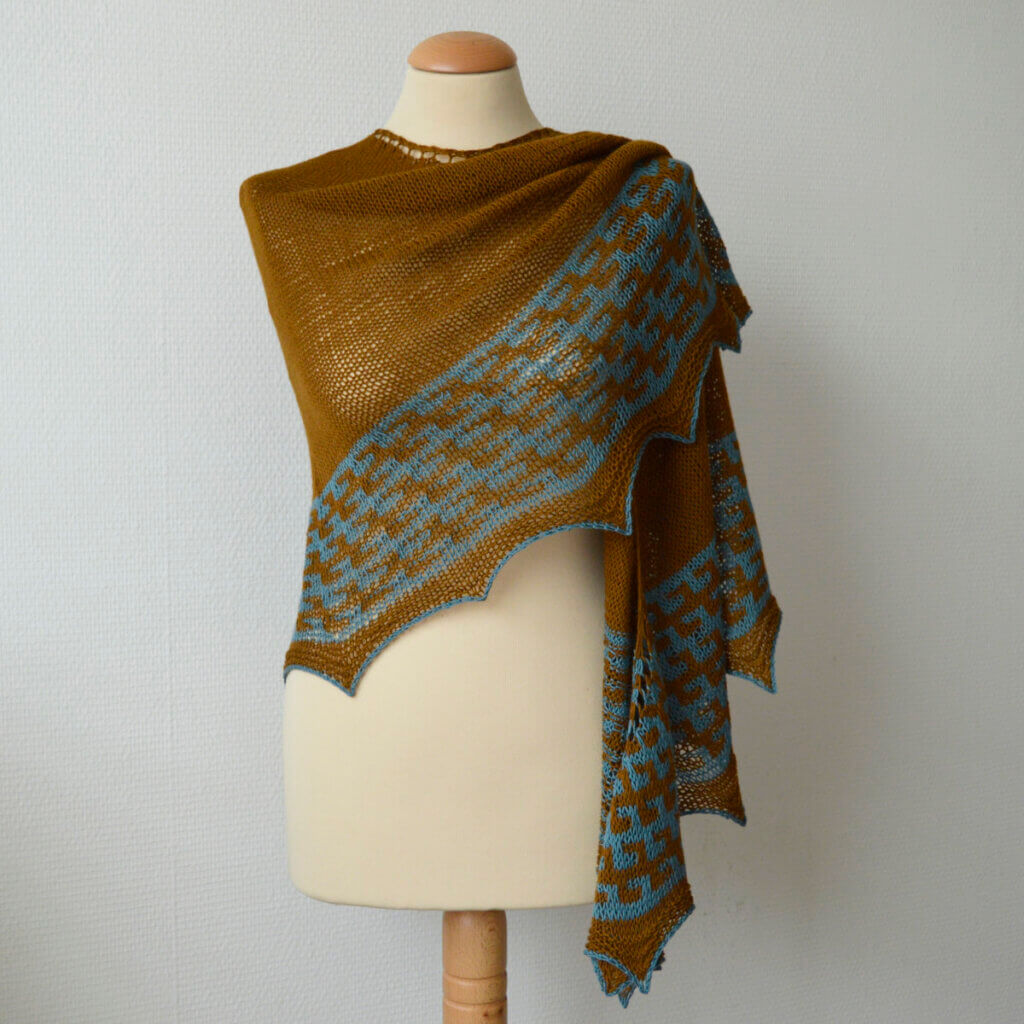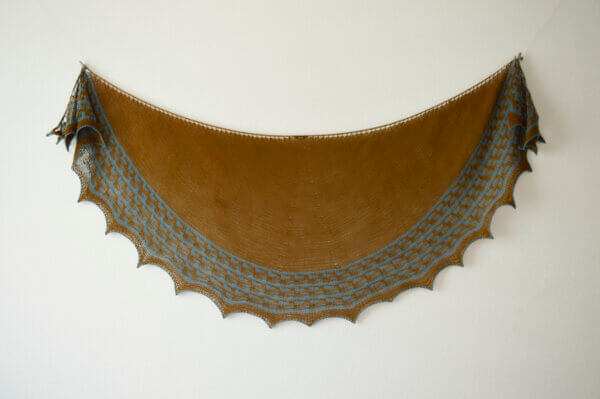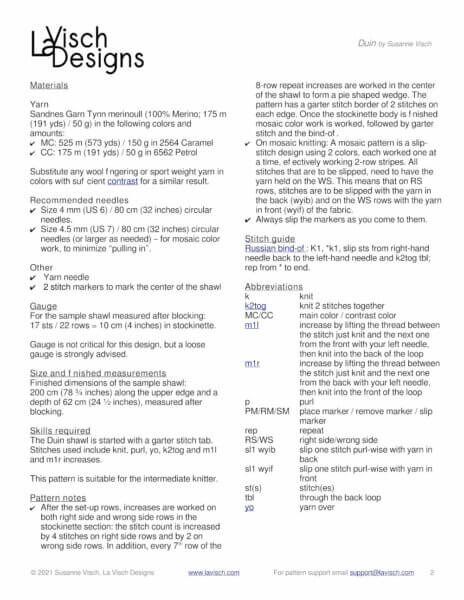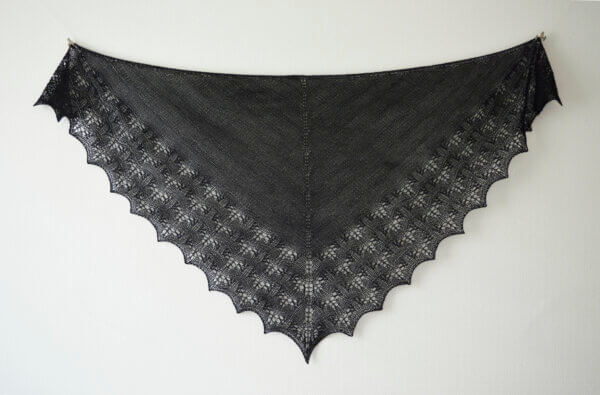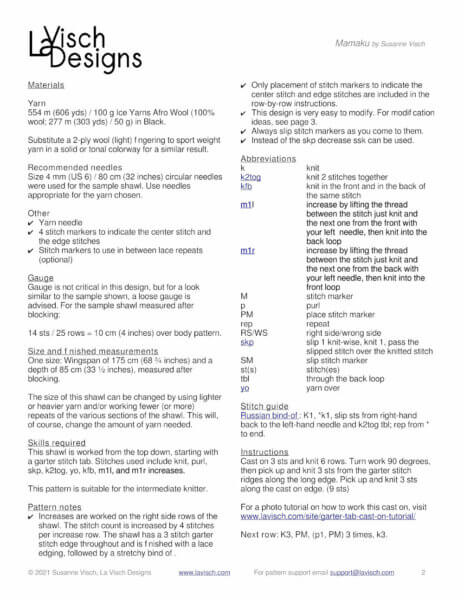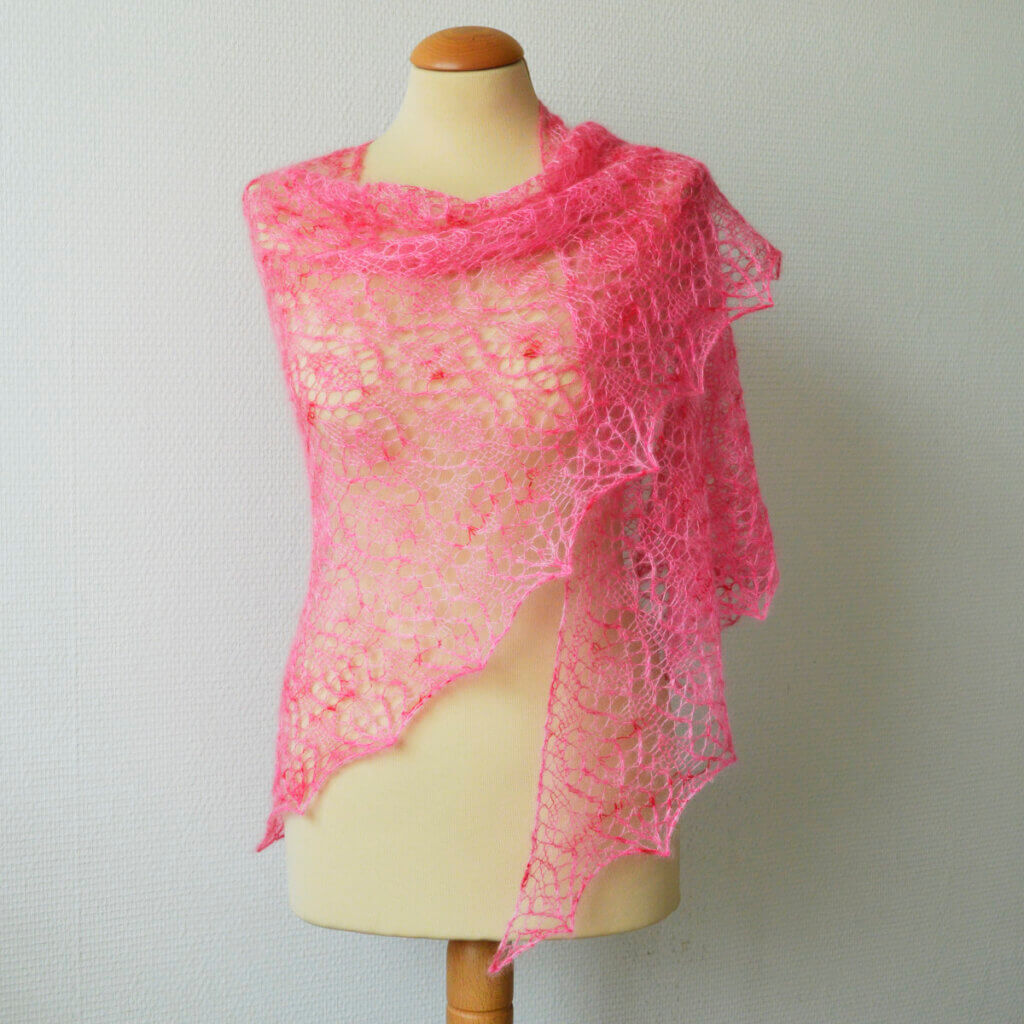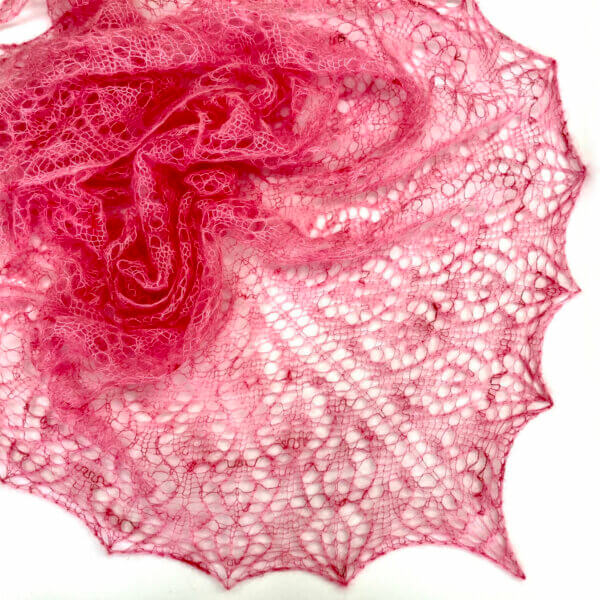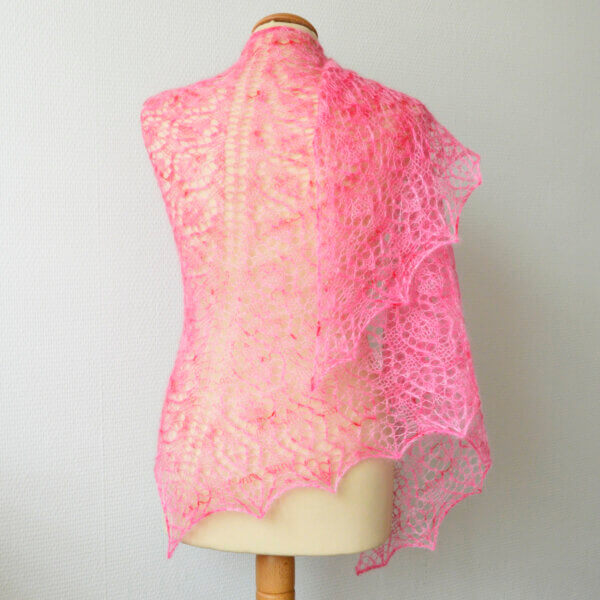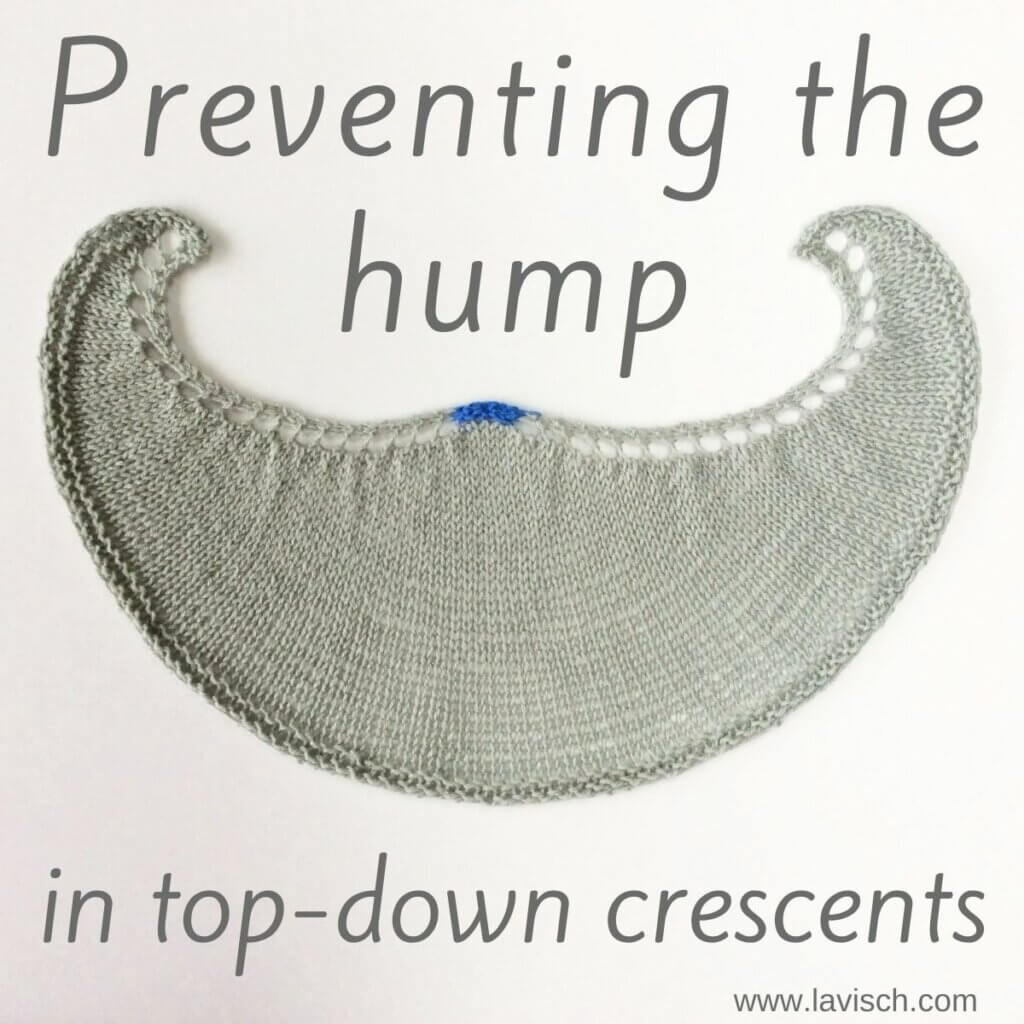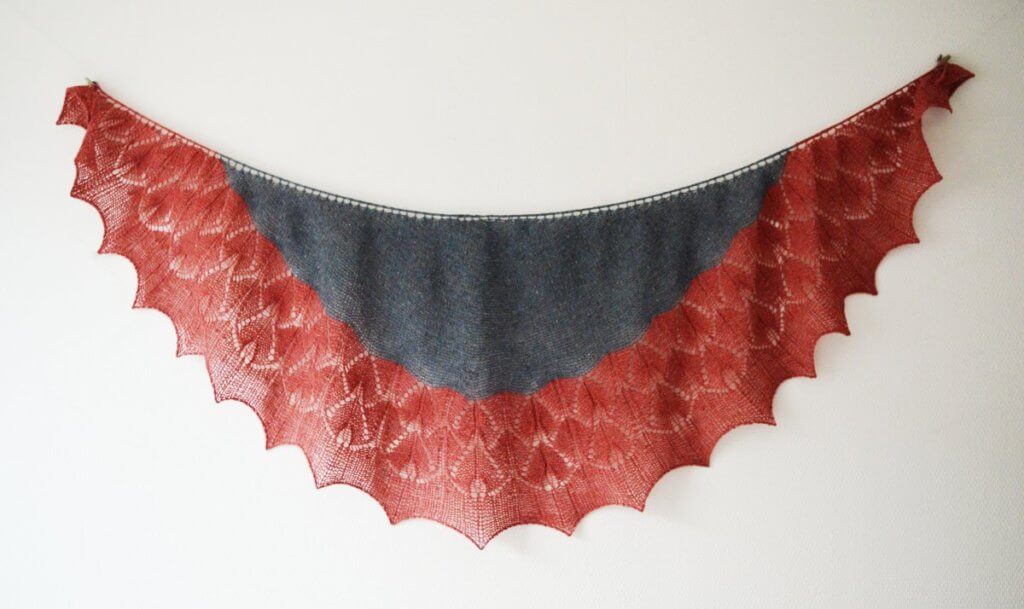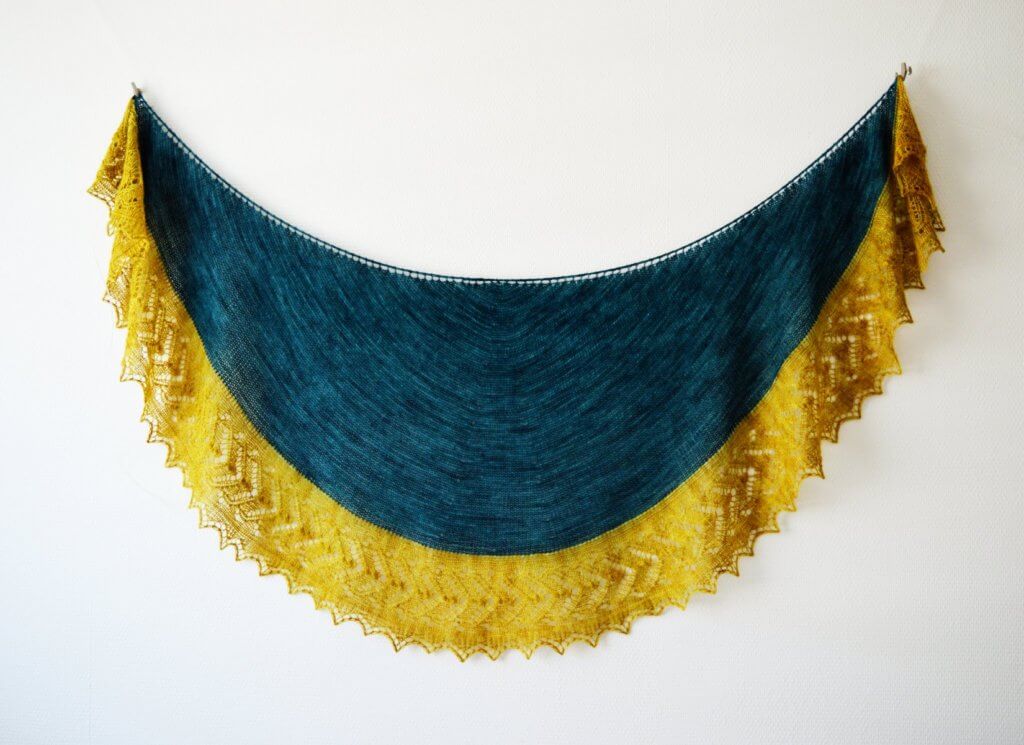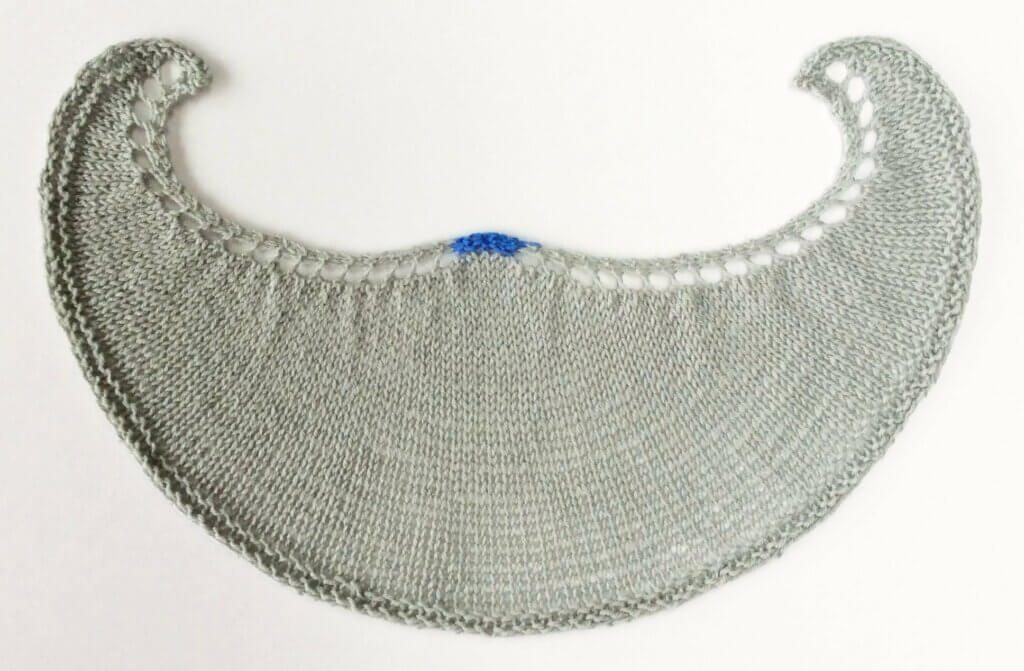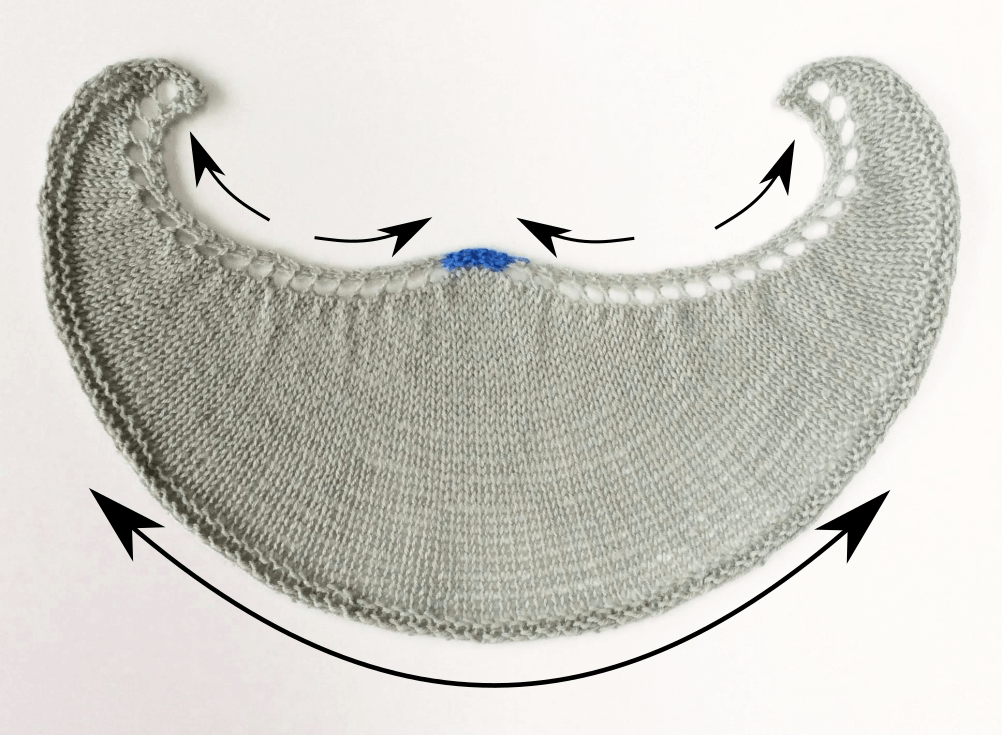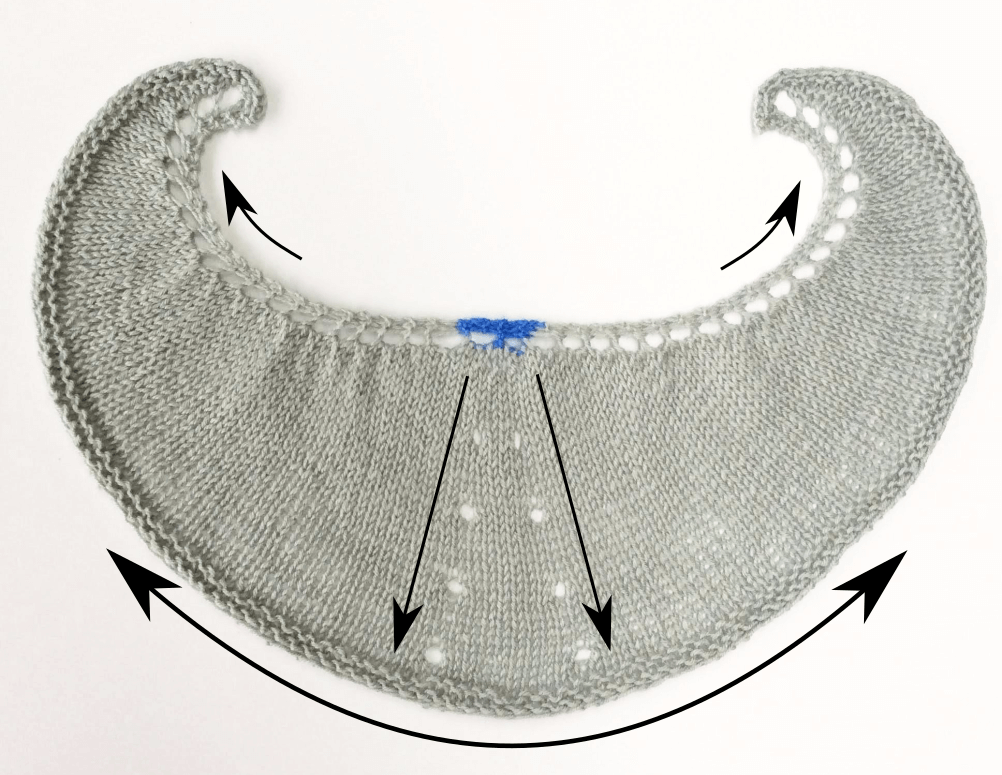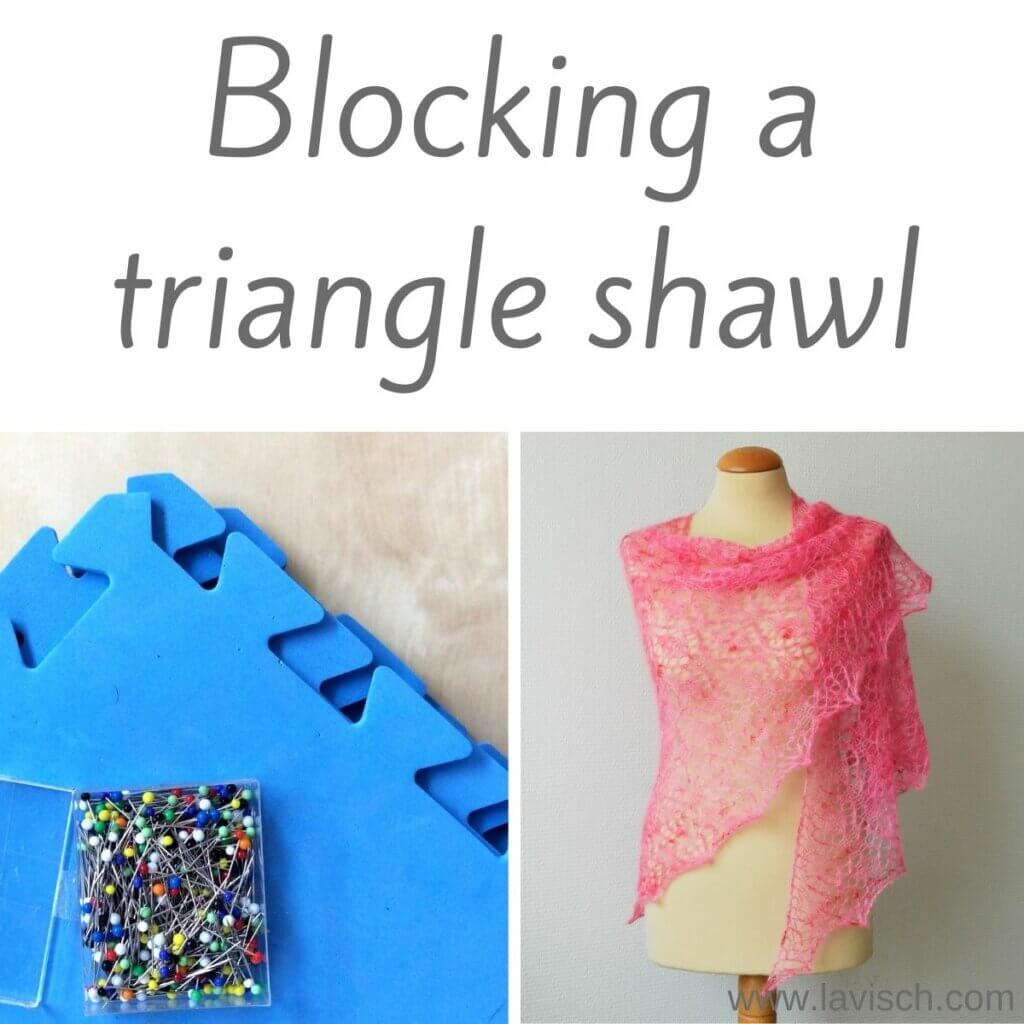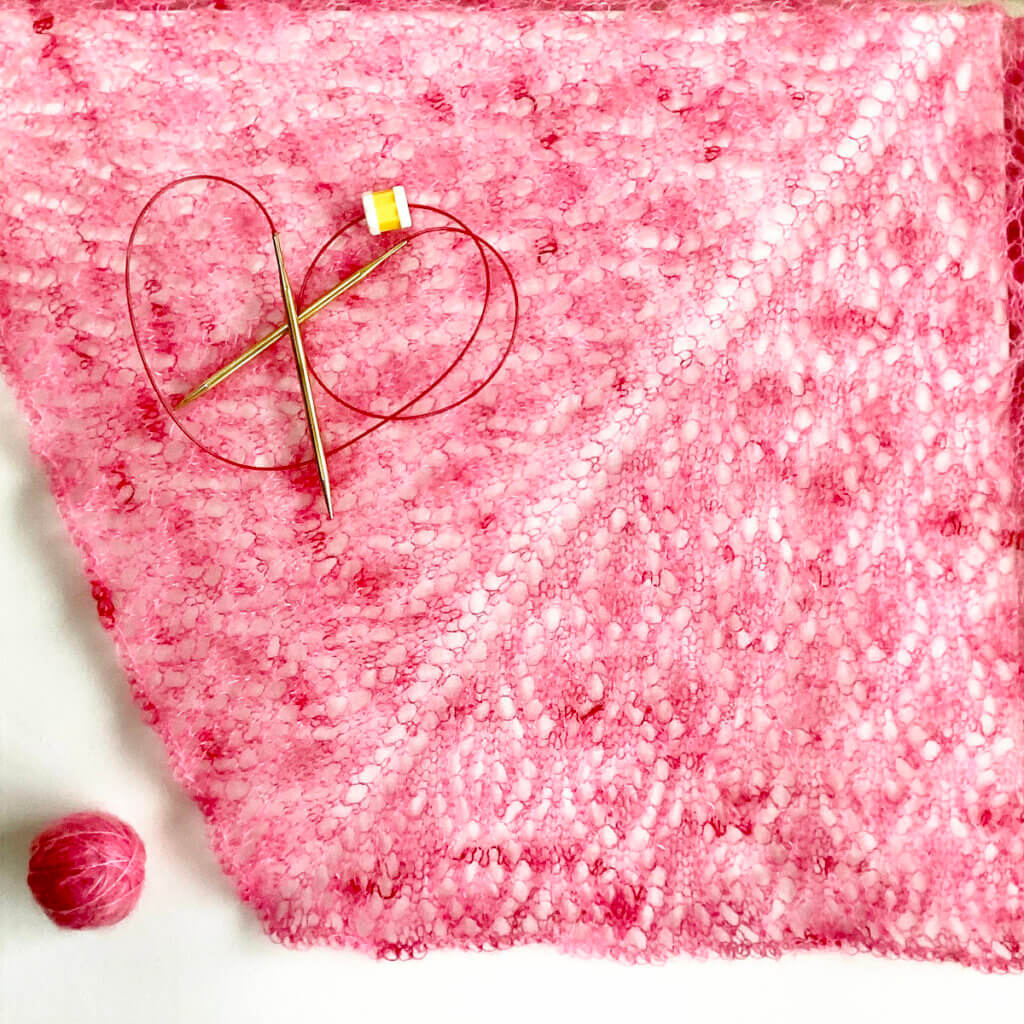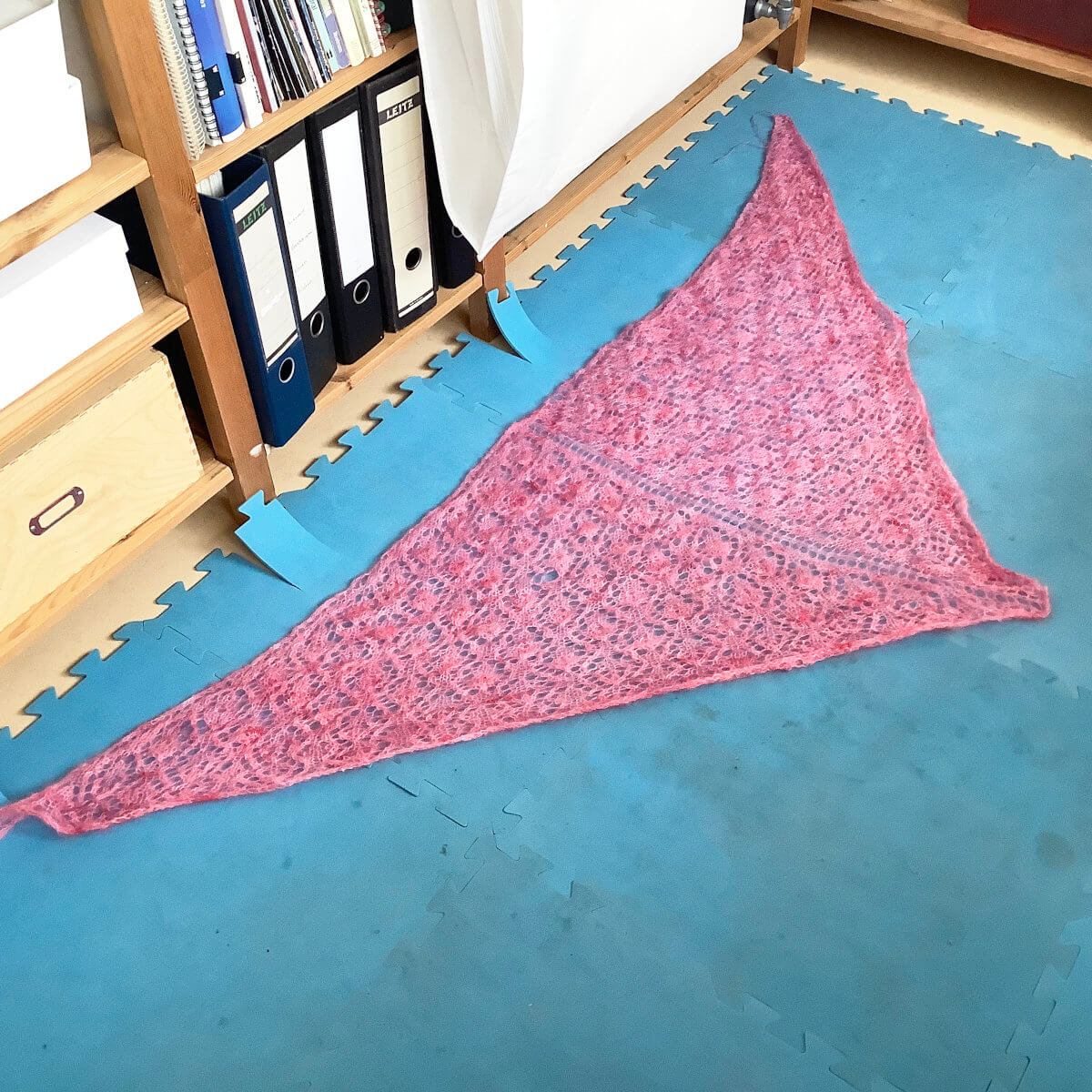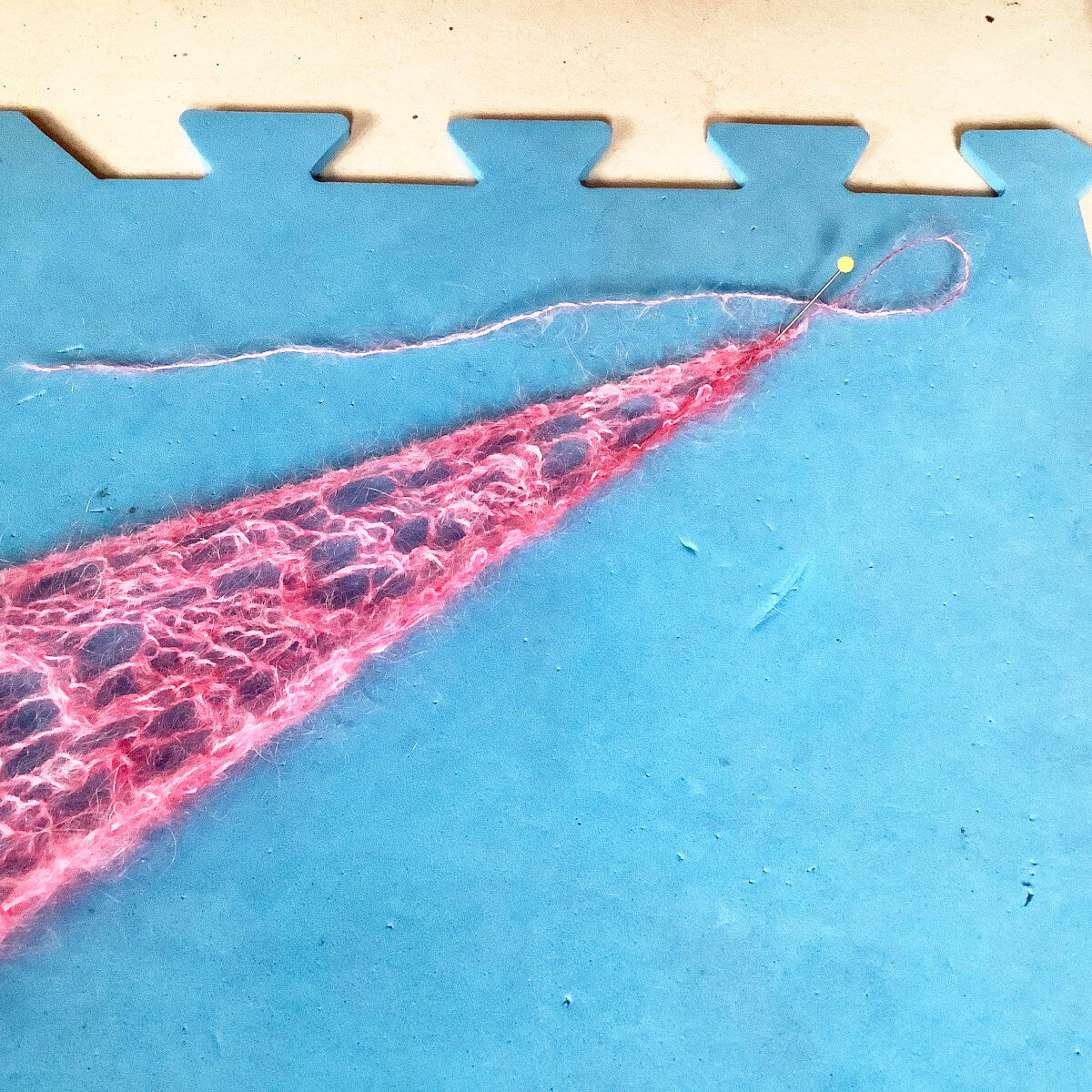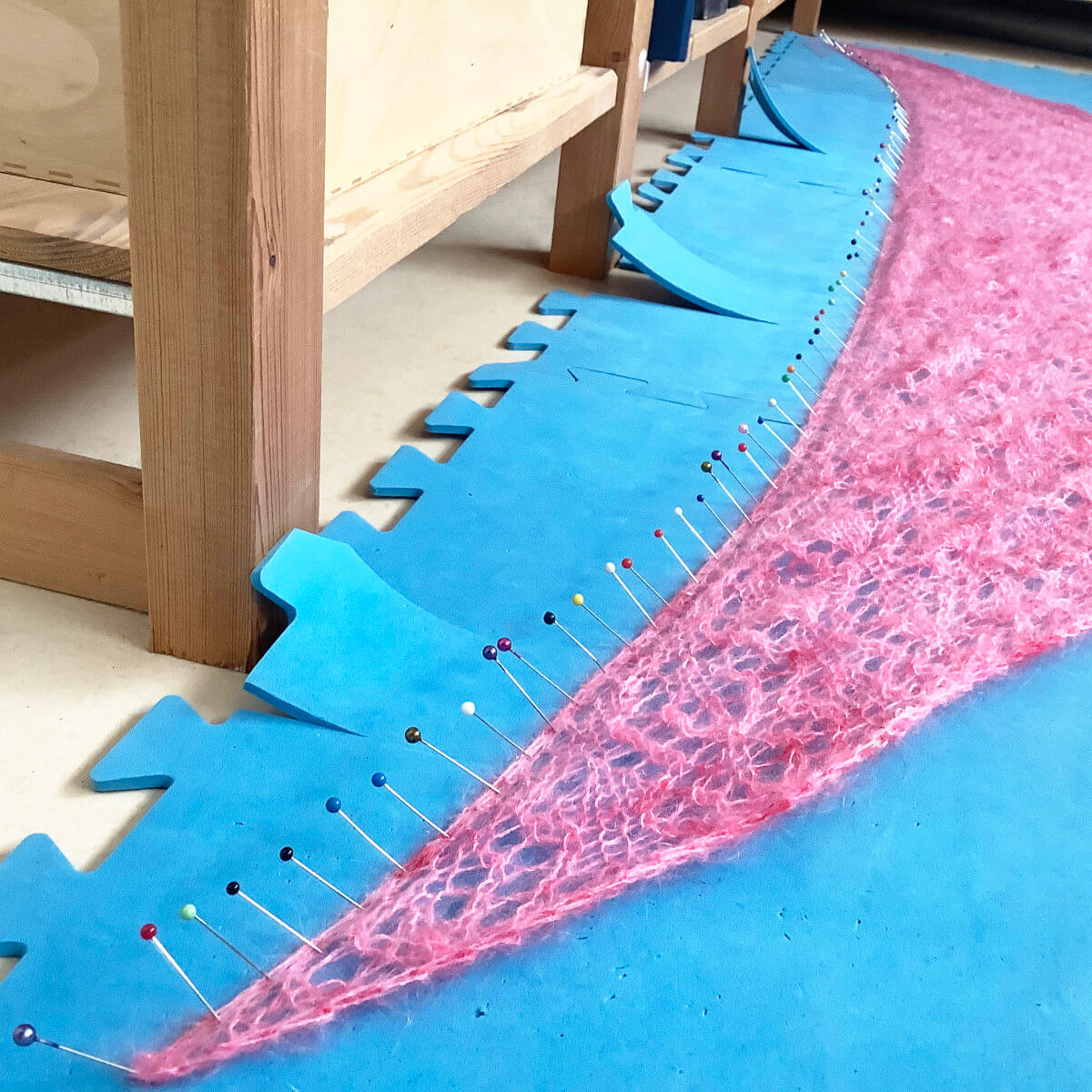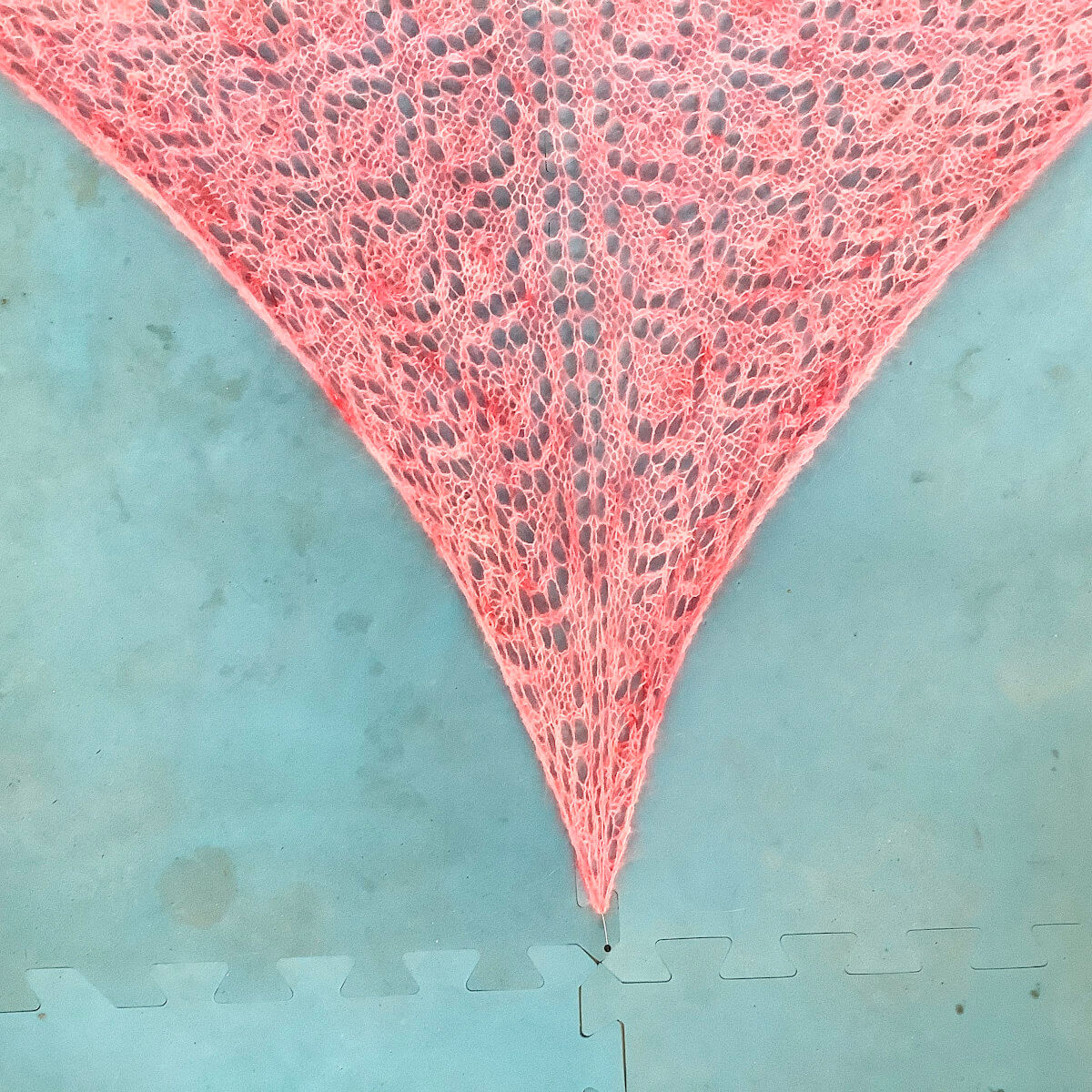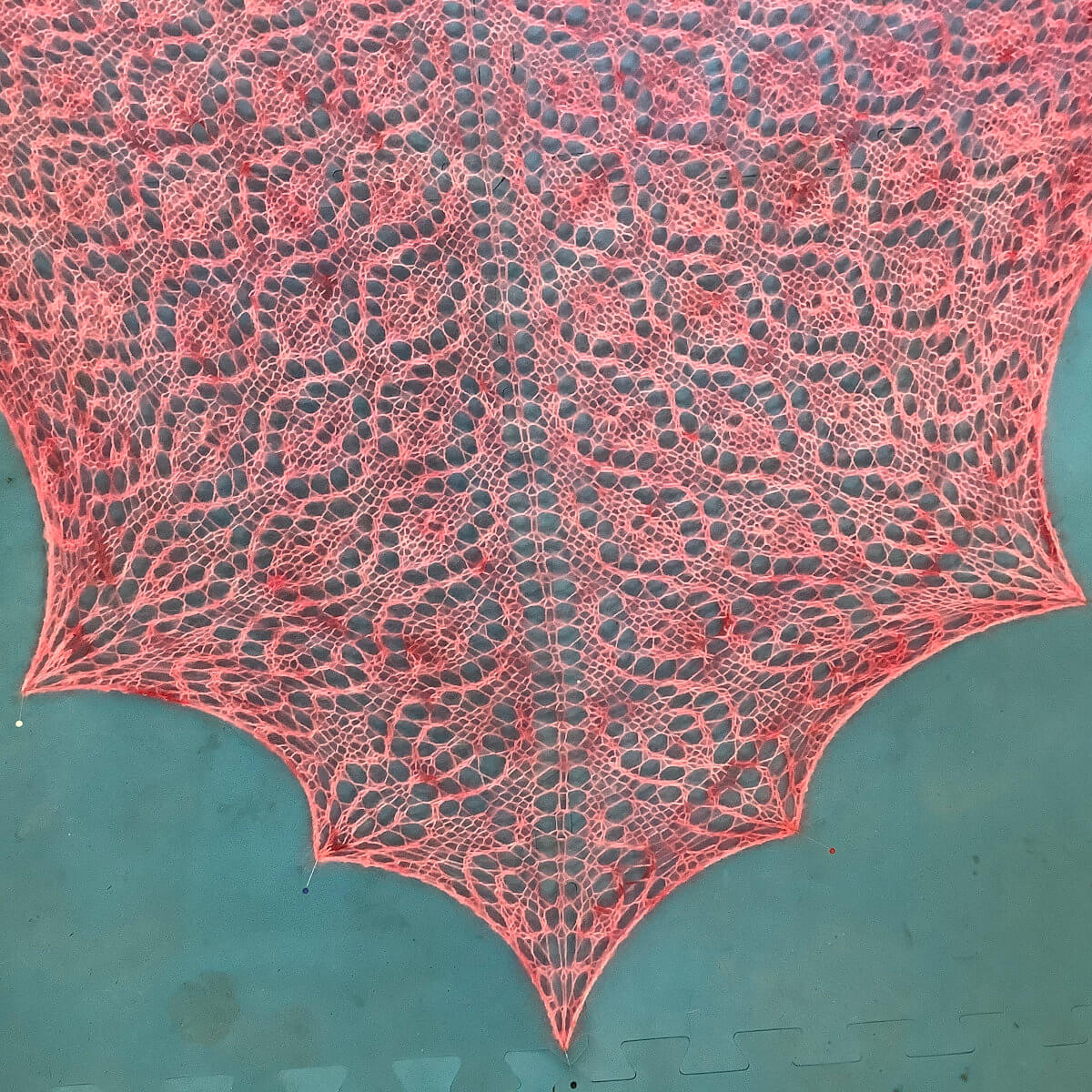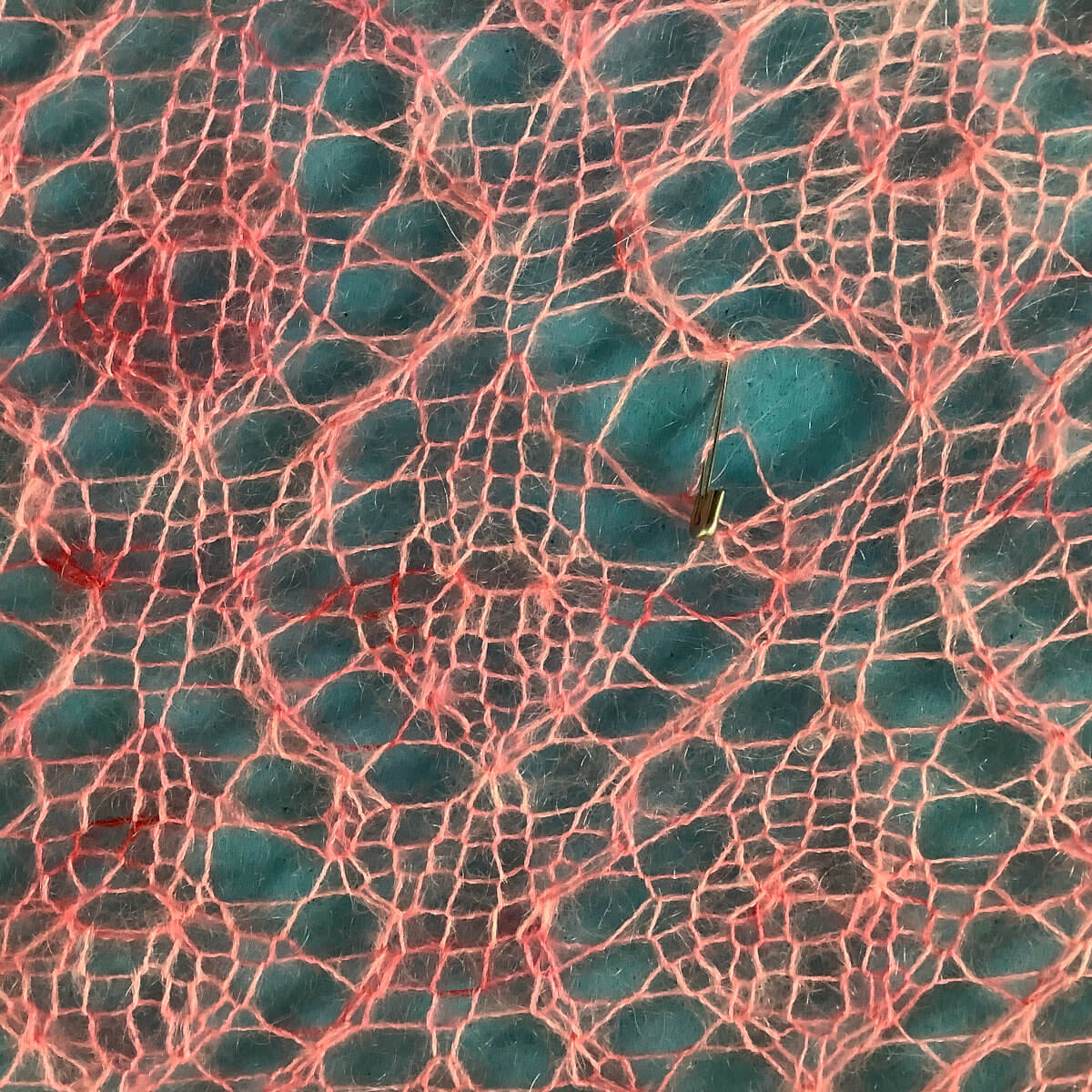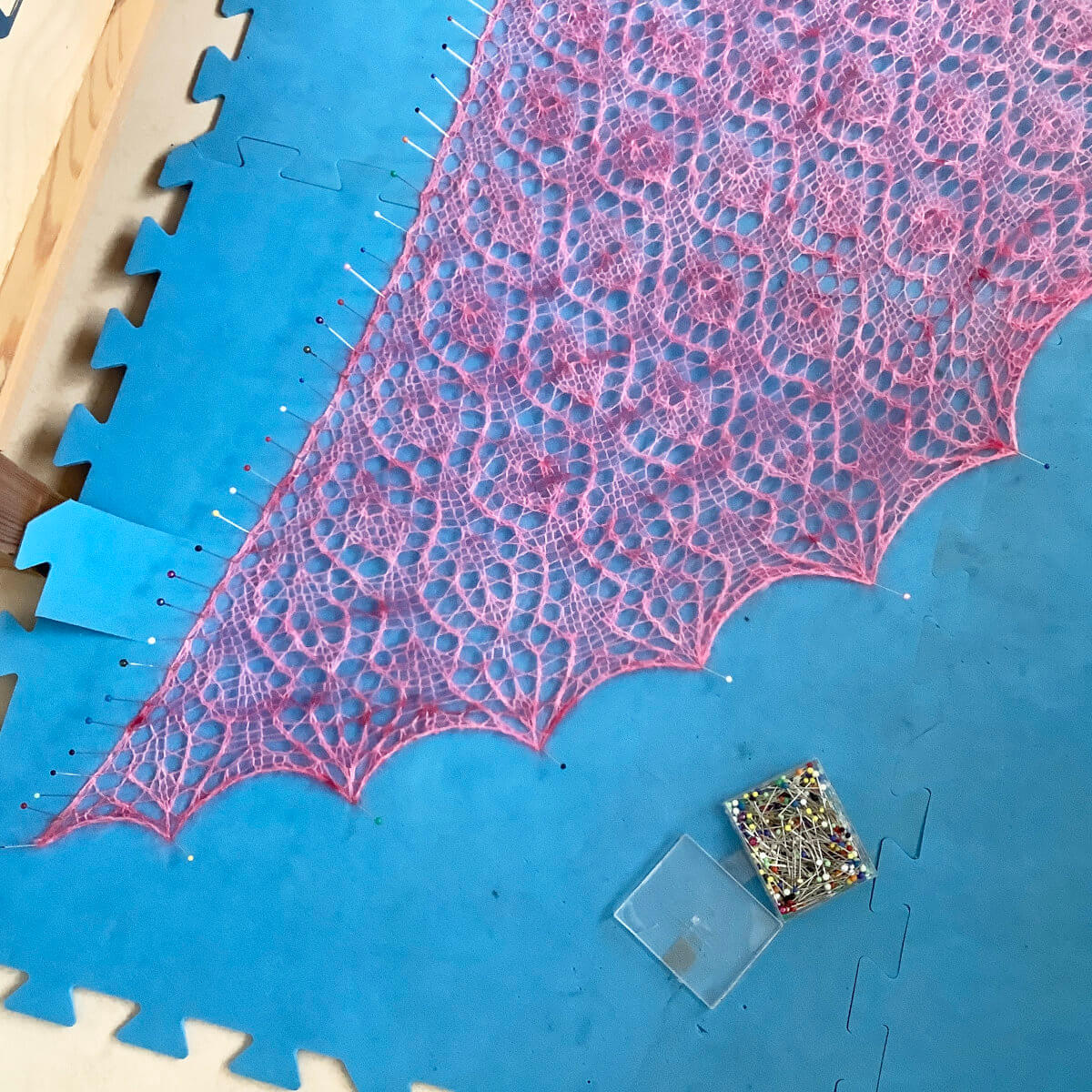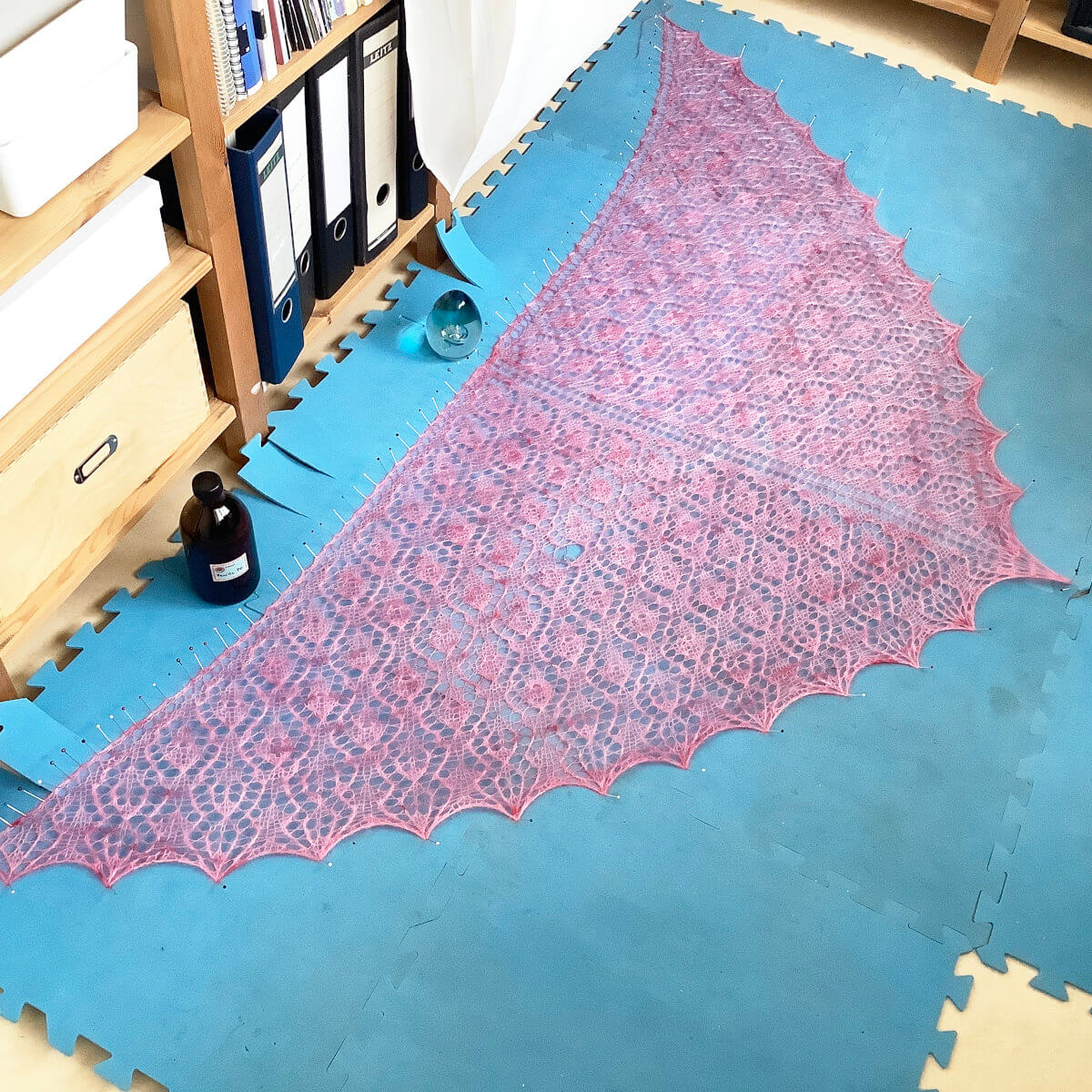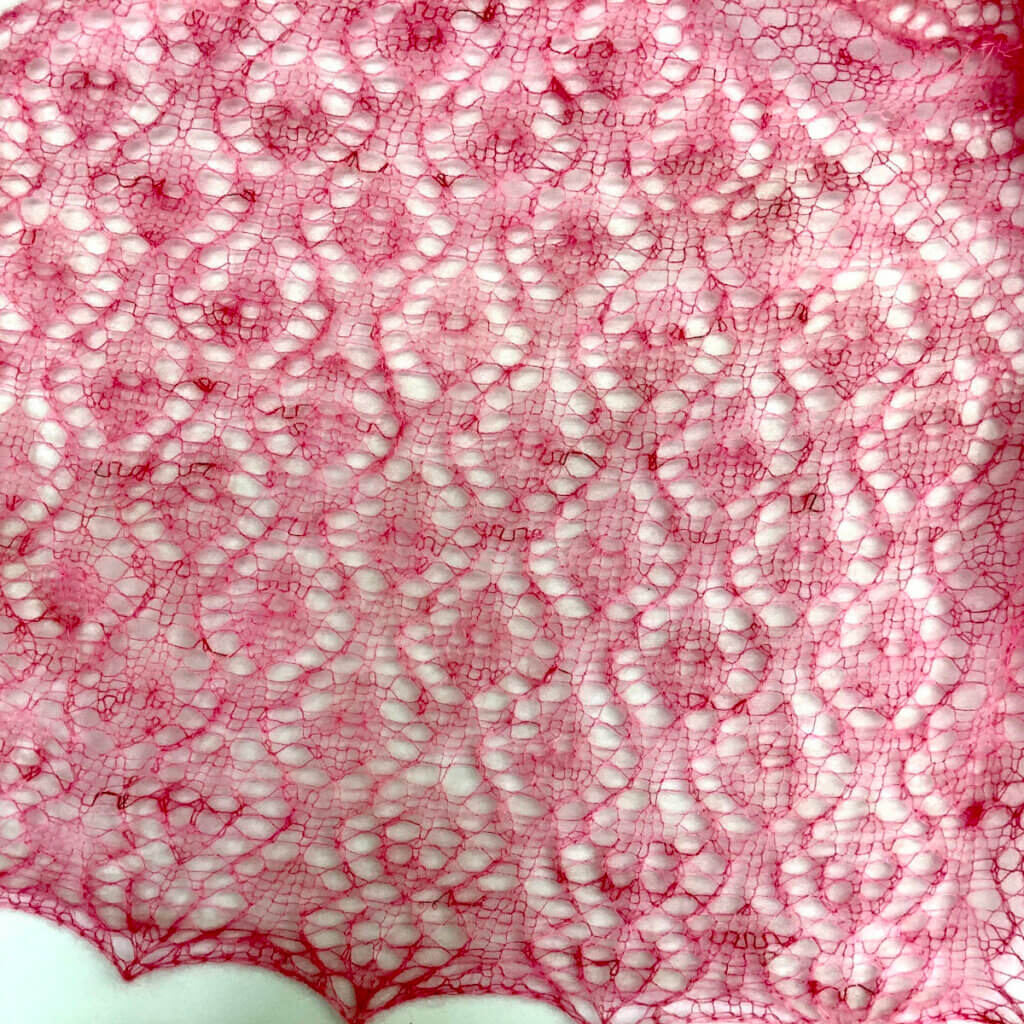rose pink candy
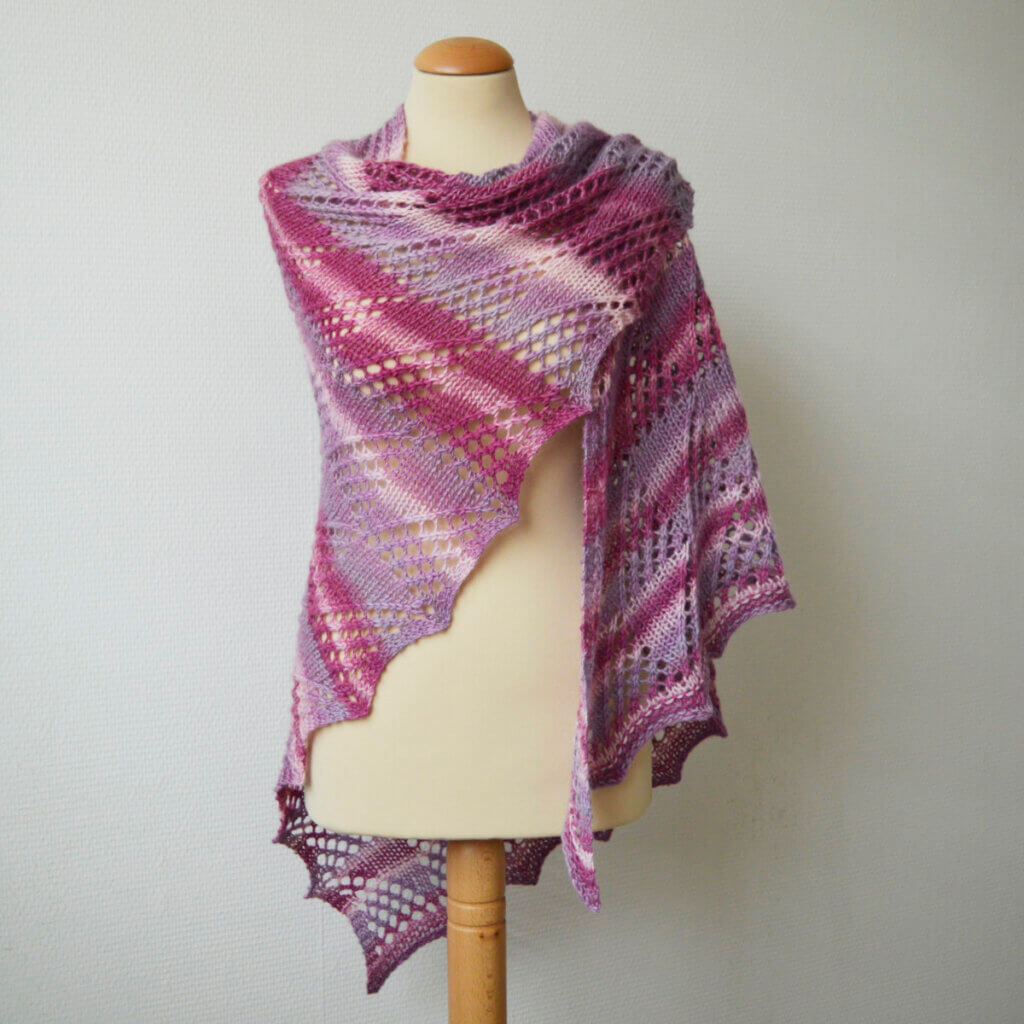
Rose Pink Candy is a fun triangular shawl knit sideways. Knit in an aran/bulky weight yarn, it knits up pretty fast too. This design is however very easy to modify for other yarn weights: just cast on and repeat the body patterning until the shawl has the desired size!
The pattern contains both fully written out as well as charted instructions for the patterning.
Pay what you want: (minimum €6.95)
Difficulty level
Stitches used in this design include knit, purl, yo, kfb and k2tog. This pattern is therefor suitable for the intermediate knitter.
Sizes and finished measurements
Finished dimensions of the sample shawl:
Span width of 180 cm (70 ¾ inches) along the upper edge and a depth of 95 cm (37 ½ inches), measured after blocking.
Change the size of the Rose Pink Candy shawl by using lighter or heavier yarn and/or working less (or more) repeats of the body section of the shawl. This will, of course, change the amount of yarn needed.
Pattern details
- Gauge: Approx. 11.1 sts / 17.1 rows = 10 cm (4 inches) over body pattern, measured after blocking. Gauge is not critical in this design, but should give you a fabric that you like with the yarn used.
- Pattern languages included: English.
- Digital PDF has 4 pages (letter size)
Materials
- Yarn: 570 m (624 yds) / 300 g Big Delight by Garnstudio Drops (100% wool; 190 m (208 yds) / 100 g) in color “01”. Substitute wool aran to bulky weight yarn of comparable thickness, in a gradient color, for a similar result.
- Size 5 mm (US 8) / 80 cm (32 inches) circular needles, choose needles appropriate for the yarn chosen.
- 2 stitch markers to indicate the edge stitches (optional)
- Stitch markers to indicate the repeats of the patterning (optional)
- Yarn needle




